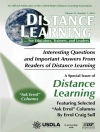The number of longitudinal data archives is growing almost daily, yet no resource exists to help understand the relationship between research questions and archival data–until now. Drawing on a single project, the Lewis Terman Study at Stanford University, the authors illustrate how to use the model-fitting process to select and fit the right data set to a particular research problem. Employing a step-by-step approach, this handy volume covers the measurement of historical influences, the adaptation of existing coding schemes to temporal patterns that are characteristic of life records, and the recasting of archival materials to illuminate contemporary questions that the data were not designed to answer.
Spis treści
Introduction
Working with Archival Data
Recasting the Archive
From Retirement to Late-Life Careers
Measuring Historical Influences
O autorze
Eliza Pavalko came to IU in 1991 after a postdoctoral fellowship in aging and the life course at the Carolina Population Center at the University of North Carolina, graduate work at Florida State University and undergraduate work at Guilford College. Eliza has published papers with graduate students in Journal of Health and Social Behavior, Social Forces, Journal of Marriage and the Family and Journal of Gerontology on relationships between women′s employment, unpaid work and health over the life course. Current projects include a study investigating social change in the work-health relationship for women with Fang Gong and Scott Long and a study of the mental illness careers of 1950s state hospital patients with Bernice Pescosolido and Courtenay Harding. Eliza spends her free time gardening and walking, and whenever possible, riding her horse, Sophie.












